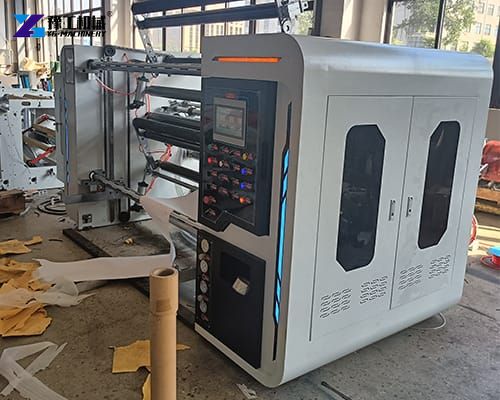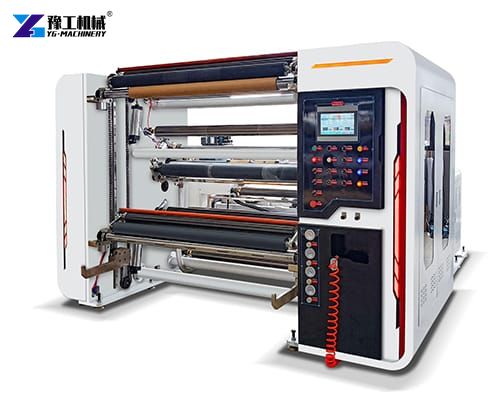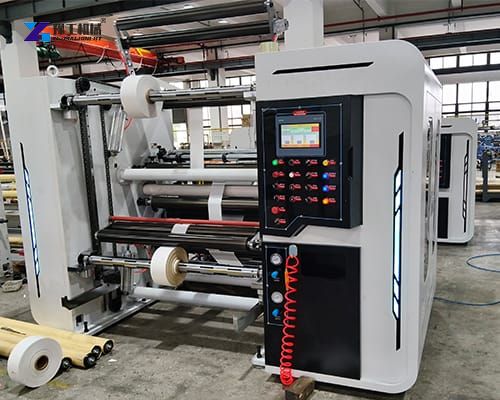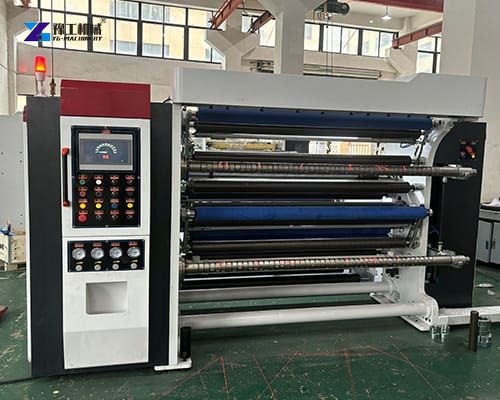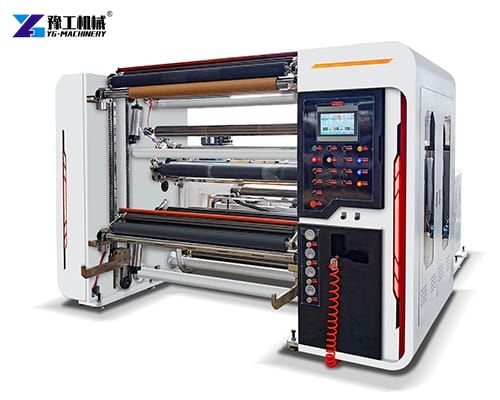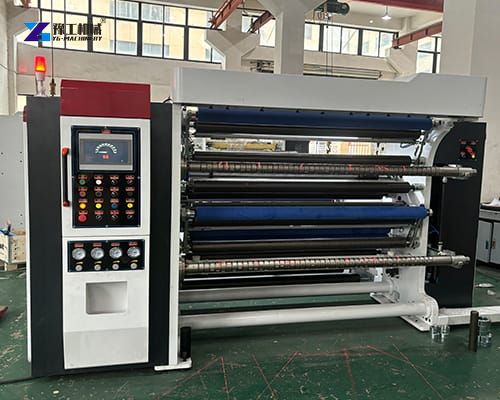Tape slitting machine, at its most fundamental level, is a piece of industrial equipment designed to slit or cut a large roll of material, known as the master roll or jumbo roll, into multiple narrower strips. These strips are then rewound onto individual cores to create smaller, more manageable rolls. The term tape is somewhat generic here, as these machines handle a breathtaking array of materials far beyond conventional adhesive tape. The scope includes but is not limited to adhesive tapes of all kinds, films, foils, labels, plastics, paper, non-wovens, and so on.

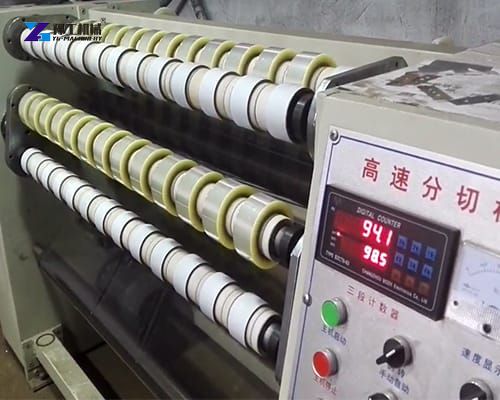
Parameter of the Tape Slitting Machine
| Maximum raw material width | 1300mm |
| Maximum raw material diameter | 800mm |
| Maximum winding diameter | 350mm (double-shaft exchange) |
| Maximum winding diameter | 230mm (four-axis exchange) |
| Minimum strip width | 12mm |
| Slitting method | 3-hole straight knife |
| Maximum mechanical speed | 200m-260m/min |
| Paper tube inner diameter | 3 inches inner core (76mm to 77mm) |
| Use air source | 6kgf/cm² |
| Power supply | 380v/50Hz |
Features of Tape Slitting Machines
- High Precision Slitting: Equipped with sharp circular blades or razor cutters that ensure clean and accurate cuts without frayed edges.
- Adjustable Speed Control: Operators can fine-tune the speed of unwinding, slitting, and rewinding to match different materials and tape types.
- Automatic Tension Control: Maintains consistent tension throughout the slitting process, preventing wrinkling or stretching of the tape.
- Servo Motor Drive: Ensures precise positioning and synchronization for smooth and stable operation.
- Automatic Meter Counting and Stop Function: The machine stops automatically once the pre-set tape length is reached, ensuring uniform roll sizes.
Structure of Tape Slitter Machine
A tape slitting machine consists of several integrated systems, each playing a vital role in its operation:
- Unwinding Section – Holds the large parent roll and unwinds it at a controlled speed. Often includes tension control devices and pneumatic shafts.
- Slitting Section: The heart of the machine, where circular or razor blades precisely cut the tape into desired widths.
- Rewinding Section: Rewinds the slit tapes into smaller rolls. Can use surface, center, or differential rewinding mechanisms.
- Drive System: Usually powered by AC or servo motors that control the speed and synchronization of all moving parts.
- Tension Control System – Keeps consistent tension from unwinding to rewinding to ensure even slitting.
- Control Panel: Houses the electronic components, PLC, and touch screen for user-friendly operation.
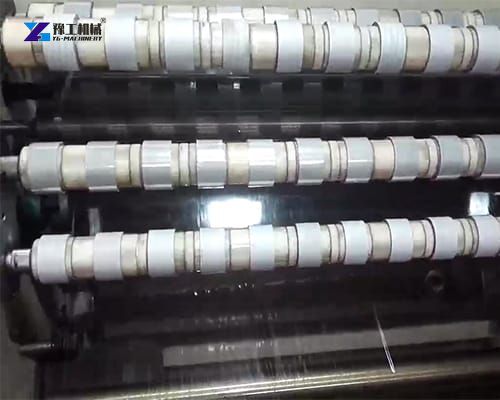
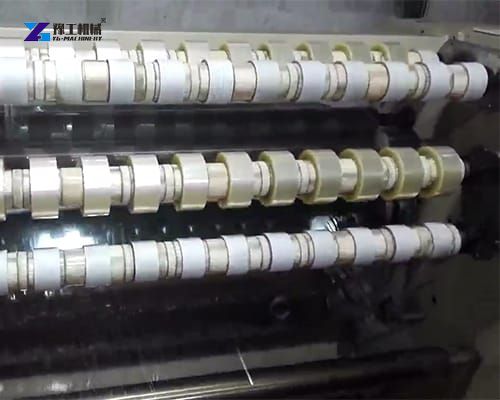
Functionality and Operational Principles
Tape slitting machines operate on the fundamental principle of converting bulk materials into standardized, customer-specific dimensions. The process begins with unwinding the parent roll, which passes through precision-cutting mechanisms that divide the material into narrower widths. Advanced systems incorporate tension control systems to maintain consistent material flow, preventing stretching or wrinkling during processing. The cutting mechanism, often utilizing rotary blades or laser technology, ensures clean, burr-free edges. Post-cutting, the material is rewound onto individual cores, with automated systems managing tension and alignment for uniform roll formation.
Advantages of Using a Tape Slitting Machine
- Increased Productivity: Automation and fast cutting mechanisms enable continuous operation with minimal downtime.
- Consistent Product Quality: Precise control systems guarantee uniform width and clean edges across all rolls.
- Reduced Material Waste: Optimized slitting patterns and tension control minimize trimming losses.
- Labor Savings: Automatic systems reduce manual intervention and operator fatigue.
- Customizability: Adjustable settings allow the production of various tape sizes and materials.
- Energy Efficiency: Low power consumption designs help reduce operational costs.

